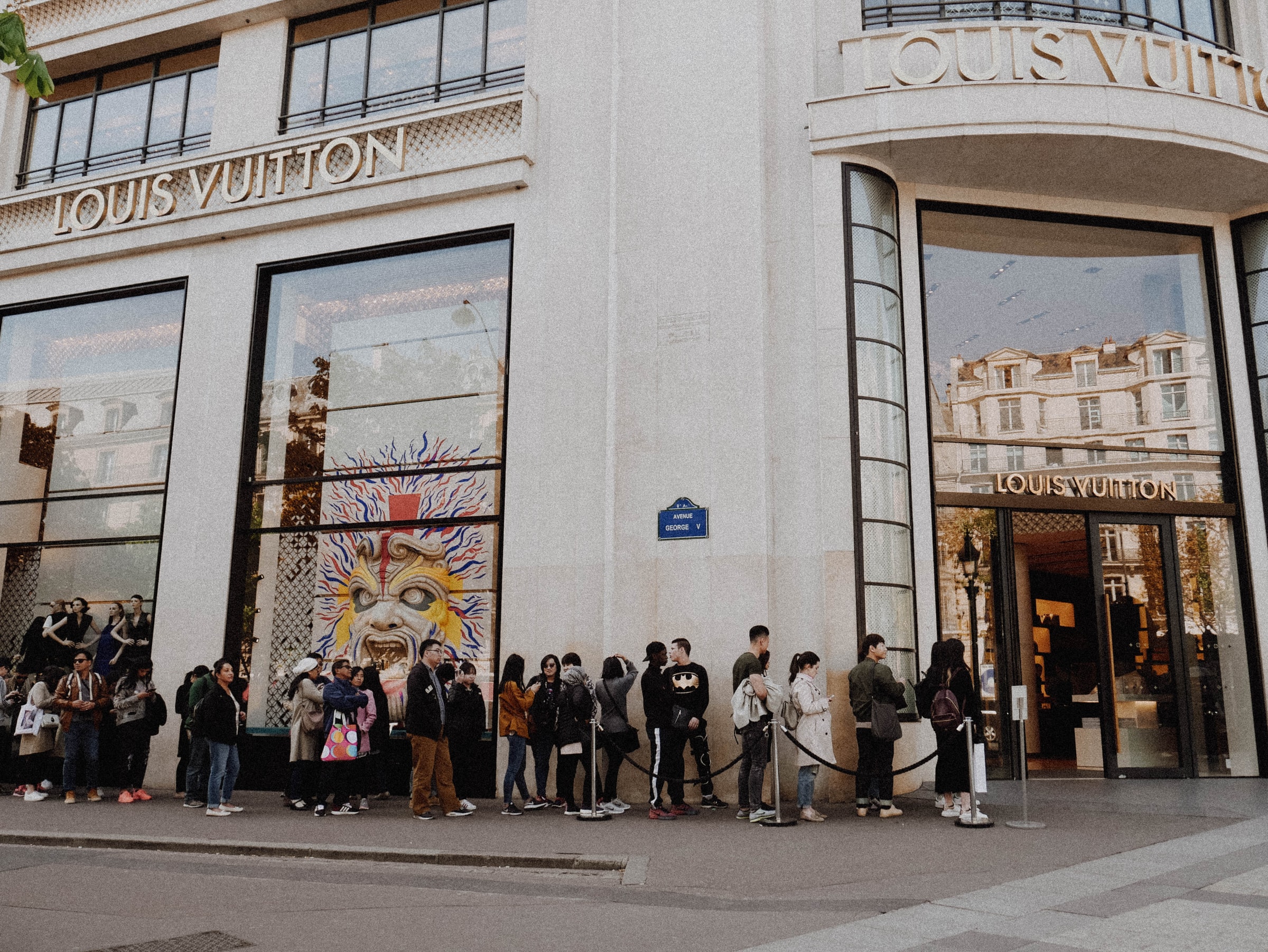Importance Of Changes In Our Clothing Buying Habits
The belief that clothes have short months to live after they end up in our closets should be abolished. We can start with a change of mentality and attitude toward our clothing buying habits and the whole process of wearing and buying new clothes.
After the revolutionary film “The True Cost'' was released in 2015, the interest of the public in healthier ways of consuming and changing clothing buying habits to help save the planet grew. Since then there have been positive changes, and the whole structure of garment production started climbing up. However, despite some adjustments in the way companies manufacture, a few bankrupt fast-fashion brands, and all the talk about sustainability, one can’t help but wonder why the madness of sale seasons is the same as it was when the film about over-consumption touched the hearts of many.
The answer is the unwillingness to change our clothing buying habits. Andrew Morgan, the director of “The True Cost” said “What if we started by slowing down and not consuming so much stuff just because it’s there and cheap and available. It’s amazing how that process makes sense financially, it makes sense ethically, it makes sense environmentally.”
HOW OUR SHOPPING HABITS IMPACT THE ENVIRONMENT
When purchasing another garment we might not even think about the process the garment went through. Only a few people will pay attention to the quality of the threads, and an even fewer number of people will ask whether the production of this piece was done in a sustainable and ethically beneficial way for the person who made it and for the person who will wear it. According to the Slow Fashion World platform and NGO organizations like The Ellen MacArthur Foundation, The Circle, Fashion Revolution, and Fashion Take Action, only 2% of fashion industry workers receive a living wage.
More than the issue of unfair salaries there is also the issue of the safety of factories. “The True Cost” also mentioned the collapsed Rana Plaza, and at the same time The New York Times spoke of a terrifying number of injured and killed workers. The Rana Plaza collapse killed 1,100 people and injured another 2,500. Events like this are more common than one might think: “Between 2006 and 2012, more than 500 Bangladeshi garment workers died in factory fires.” Seeing those numbers and knowing the impact that cheaply and massively produced clothes can have on people and the environment raises the question: Do I as a consumer add to the issue, or do I try to reduce the negative effect?
The constant pursuit of fashion trends is just as unhealthy for the mind as food gluttony is for one’s body image. If not balanced prudently, both indulgences involve consequences of addiction and false satisfaction after another purchase or meal. The issue of mindless shopping, which people are dragged into by the ability to buy fast and cheap, started when the process of obtaining only essentials slipped from under control and became an unhealthy appetite for owning more than one truly needs. The desire itself shifted towards possessions that are worth little and easy to get, but that fill the wardrobe with the latest trends. Shortly, it became an unhealthy desire that brings a deceitful comfort that comes after mindless shopping, yet fades swiftly.
The impact of massive clothing production on the environment is already well known. In fact, “more than 60 percent of fabric fibers are now synthetics, derived from fossil fuels, so if and when our clothing ends up in a landfill it will not decay” says The New York Times. The UK clothing manufacturer Hawthorn says that the production of a single t-shirt requires 2,720 liters of water. Vastly and cheaply produced tops only last a few washes and can easily be thrown away, and producing them has a great impact on the environment.

© Melanie Pongratz
THE ISSUE IS IN THE RISING DEMAND FOR NEW CLOTHES
How convenient it would be to blame the fashion industry for its unhealthy impact on the climate. Yet it’s consumer demand that drives the mass production of the newest fast fashion trends. It is a chain that only both sides of the endeavor can break; the brands by producing less in a sustainable way, and consumers by buying with awareness, not impulse. Rising demand for new wardrobes every season and new outfits for every occasion is the moving source, and without that source, the fashion industry would never be able to offer so many varieties and so often.
Imagine an individual who attempts to satisfy the desire for new clothes and heads to the mall every second week, wishing to purchase a few new items. The desire is fulfilled but not for long. The week after, the same individual will experience the call of the mall again and again. Purchased items bring no satisfaction afterward; they were bought out of a habit, not out of genuine liking or need. Thus, after a few months, those unintentional purchases end up in the landfill, or an already overloaded donation centre. According to the Huffington Post, the average American throws away 65 pounds of clothing per year. The scary thing is that it’s not only one person’s behavior that provides huge numbers of apparel waste. It takes nations to walk through the same process of purchasing and throwing garments out after only having worn them once.
In the 1990s and beginning of the 2000s, fast-fashion brands like Zara, H&M, TopShop, and Primark were going through rapid growth that was likely accepted by the public; nobody could predict that only two decades later we would be discussing ways to slow down the whole system. The idea of mixing and matching luxurious and mass produced items was considered fashionable. The new generation of young people almost rebelled against the long-lasting small wardrobes philosophy and craved trendy and affordable garments. Unfortunately, the fashion industry modified its course to meet the rising demands of consumers.
The significant change did not only include fast-fashion brands, but high-end brands as well. It was a convenient time for companies because the same young people were willing to hear about must-haves of the season. They accepted the pressure to wear the trends of the season, and they happily paid for them. Now in 2020, we’re back to dreaming about the old-fashioned way of shopping, of owning longer lasting, well produced, and loved clothes. We’re trying to fight the system we once created and supported. It is possible to slow down the roll of mass production, but it requires effort from both sides of the chain; from the supplier and the consumer.

© Adrej Lisakov
RETHINKING THE WHOLE SYSTEM
The entire business structure of the fashion industry needs improvement. It needs radical changes that with time will allow less waste, appreciation of designers work, ethical treatment of factory workers, and slower production with deeper meaning behind each piece of clothing. The solution lies in the mindset of millions of people who once believed that cheaply produced garments are not harmful, and that there are no consequences for constant, careless shopping. The change would only start with people who perhaps, most of the time, ignorantly support brands who produce in an unconscionable way. There are steps each person can start practicing today to slow down their damaging impact. These steps include reusing, taking good care of the clothes we already own, repairing, overcoming the idea that second-hand shopping is shameful, and purchasing less.
There are harmful lustful cravings, and there are healthy wishes and needs. Understanding the difference that lays between those two can lead us all to a better outcome. The moment clothes are observed with appreciation as the result of artistic creativity and are no longer considered disposable, then positive development will start. We can already witness some positive change that’s driving the fashion industry toward a more sustainable future. According to The New York Times, "In 2009, Copenhagen held the first recognized sustainable fashion conference. At that time, no one in the industry was thinking about this question at all.”
It was a decade ago when designers and companies started talking about necessary changes. Since then, slowly but aiming in the right direction, more and more brands and consumers are switching to sustainability. H&M announced that 57% of the materials they now use are created using recycled or other sustainably sourced fibers. Also, the current pandemic has affected the minds of many creative directors, prompting a group of designers to create an "Open Letter to the Fashion Industry,” which suggests future changes for the way clothing is produced and consumed. "We agreed that the current environment although challenging, presents an opportunity for a fundamental and welcome change that will simplify our businesses, making them more environmentally and socially sustainable and ultimately align them more closely with customers’ needs.”
The belief that clothes have short months to live after they end up in our closets should be abolished. We can start with a change of mentality and attitude toward the whole process of wearing and buying new garments. Fashion brands certainly need to reinvent the way they produce clothing. Many factors in the industry need reformation; the health and safety of workers, environmental aspects, production of smaller collections, and the way fabrics are made. There are numerous steps fashion companies can and should take, but the real change starts with those who drive sales and bring the flow of money into the businesses. It starts with us, with consumers.

© Clark Street Mercantile





